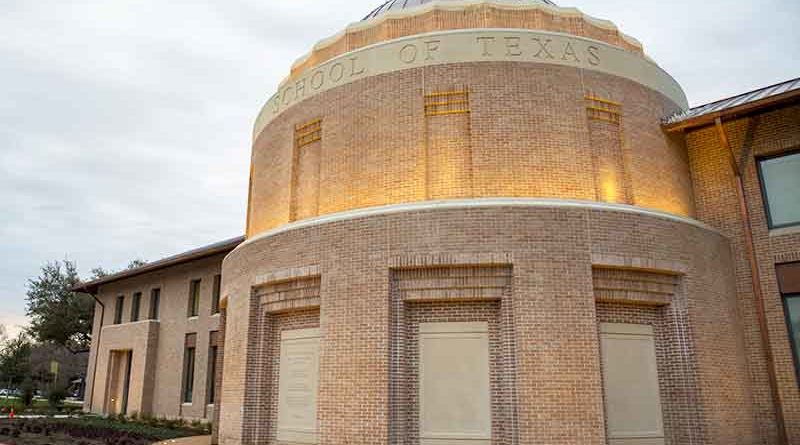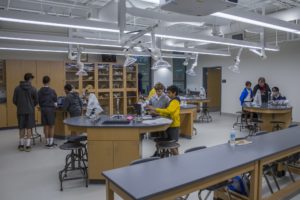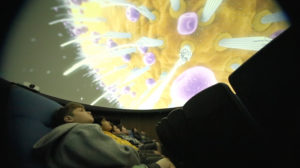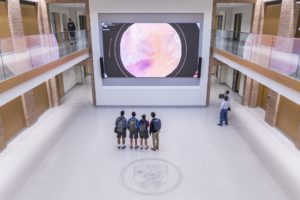New Planetarium Grows St. Mark’s Brand
St. Mark’s School of Texas has been at the forefront of science, math, and technology instruction dating back to 1961 when a planetarium was first built on the school’s campus.
(ABOVE: The new planetarium at St. Mark’s Winn Science Center seats up to 80 students. Courtesy photo)
Fast forward to 2019, and a new, state-of-the-art science center and planetarium that cost more than $40 million has students, teachers, and community members awestruck.
The McDermott-Green Science Quadrangle has long been a staple at St. Mark’s, but the Steve Winn Family Foundation donated $10 million in 2014 for a larger, more advanced science center. Over the next three years, another $32 million was given by 55 families, and the Board of Trustees approved construction of the center.
Now open to students, the combined 75,000-square-foot Winn Science Center and renovated McDermott-Green Science Building feature modern laboratories, a lecture hall, a greenhouse, and spaces for engineering, robotics, DNA science, and computer science. There’s also an expanded Lower School science area.
The crown jewel of the new center: the multipurpose planetarium.
“This new system can do more than just astronomy,” said Steven Balog, physics instructor and planetarium director. “A couple of different classes have come through already for earth science, and our ninth-grade classes have even used it for anatomy.
“We’re even trying to get World War I maps in the planetarium, so our classes that are studying the war right now can use it. I don’t think a week goes by where my kids don’t ask about going to the planetarium.”
Balog wants to open the planetarium’s doors to private and home schooled students at no cost.
“That was a goal of mine from the start,” he said. “There are 10 planetariums in Dallas-Fort Worth, and we’re the only one on a private school campus. We wanted to have a place the private school kids could use.”
Winn, who the new center’s namesake, was immediately attracted to the school’s science programs and asked his parents to enroll him in 1962.
“Our founders wanted a school where we could train future engineers and scientists, and go out and lead the world,” said Jim Bob Womack, director of development. “It’s not an accident that STEM-type programs have been a big part of our school’s history. This school has always had a second mission, and that’s to impact the community around us. We knew that when we were designing this. It expands our reach.”

And what better way to get students interested in science, Balog said, than to expose them to a state-of-the-art planetarium?
“The best way to get a kid involved in science is to show them the stars, and that makes them want to learn more,” Balog said. “So, the planetarium is a huge plus for us and our boys.”








